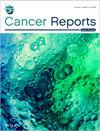Clinical Relationship Between Serum ApoB, HER2, and Myocardial Ischemia Risk in Breast Cancer Patients
Abstract
Background
The risk factors and clinical prediction of cardiovascular comorbidities in patients with breast cancer have not been fully clarified.
Aims
This retrospective case–control study was designed to investigate the factors affecting myocardial ischemia occurrence in breast cancer patients.
Methods and Results
A total of 194 cases (144 breast cancer and 50 benign breast tumor patients) were included. Univariate and multivariable Cox regression found that ApoB, age, and HER2 were significant factors responsible for the myocardial ischemia occurrence in breast cancer patients. By comparing the significance of ApoB in breast cancer patients versus benign breast tumor patients, it was observed that ApoB and HER2 were crucial predictors of myocardial ischemia in breast cancer patients compared to those with benign breast tumors. These factors were utilized to construct the clinical prediction model, achieving a combined area under the curve (AUC) of 0.583. The decision curve analysis (DCA) indicated that the model-predicted population, within a threshold ranging from 0.35 to 0.70, would experience a therapeutically clinical net benefit. Kaplan–Meier plot indicated that ApoBhigh and HER2+ categories were high-risk populations for myocardial ischemia in breast cancer patients, although there was no significant difference between ApoBlow and ApoBhigh subgroups for the 3-year disease-free survival.
Conclusion
We demonstrated that ApoB and HER2 were potential factors in predicting the myocardial ischemia occurrence in breast cancer patients. This study will help provide clinical evidence for the early prediction of cardiovascular comorbidities in breast cancer patients.


 求助内容:
求助内容: 应助结果提醒方式:
应助结果提醒方式:


